The 8 Smallest Linux Distros That Are Minimal and Lightweight
Do you have an old PC lying around gathering dust? Would you like to make use of the old small-capacity USB flash drive sitting in your draw? You can reuse your old computer and a USB flash drive by installing a super small Linux distribution on them.
Here are eight of the smallest Linux distros that need almost no space!
Before You Start: How to Create Bootable USB Flash Drives
The first thing you need is a tool to create bootable USB flash drives. There are numerous tools you can use to create a bootable USB flash drive. However, the best recommendation for Windows users will be Rufus, while Linux and macOS users should try Etcher.
Rufus
Rufus is one of the fastest, smallest, and easiest USB burning tools available for Windows users. It has decent customization options and can automatically detect your USB flash drive. Furthermore, Rufus can detect the type of ISO you are attempting to burn and apply a common setup for any tiny Linux distro.
Download: Rufus for Windows
Etcher
Linux and macOS users should use Etcher, an open-source USB burning tool. Like Rufus, Etcher is tiny, very fast, and comes with a great GUI that makes the tool incredibly simple to use. Etcher doesn't have many settings, but it does work well the overwhelming majority of the time. Windows users who find Rufus confusing can also use Etcher as the tool is also available for Windows.
Download: Etcher
Now, onto the tiny Linux distros, all of which are free (unless stated otherwise)!
1. ArchBang
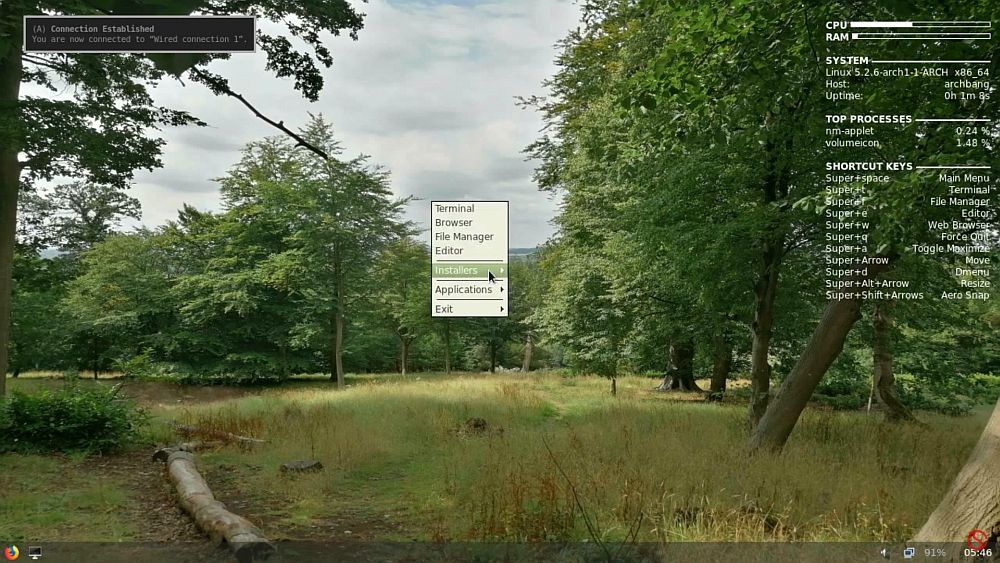
ArchBang is based on Arch Linux and inspired by CrunchBang, which was another small Linux distro. ArchBang is essentially Arch Linux made easier and reduced in size. It includes the power and flexibility of Arch Linux without the complex setup and installation.
ArchBang works on i686 or x86_64 compatible machines, uses 700MB of disk space, and requires just 256MB of memory.
You can use ArchBang as a fully-featured desktop operating system or as a portable live OS. It is fast, stable, and always up to date, making it a handy minimal Linux distro for anyone with an old computer.
2. Tiny Core Linux
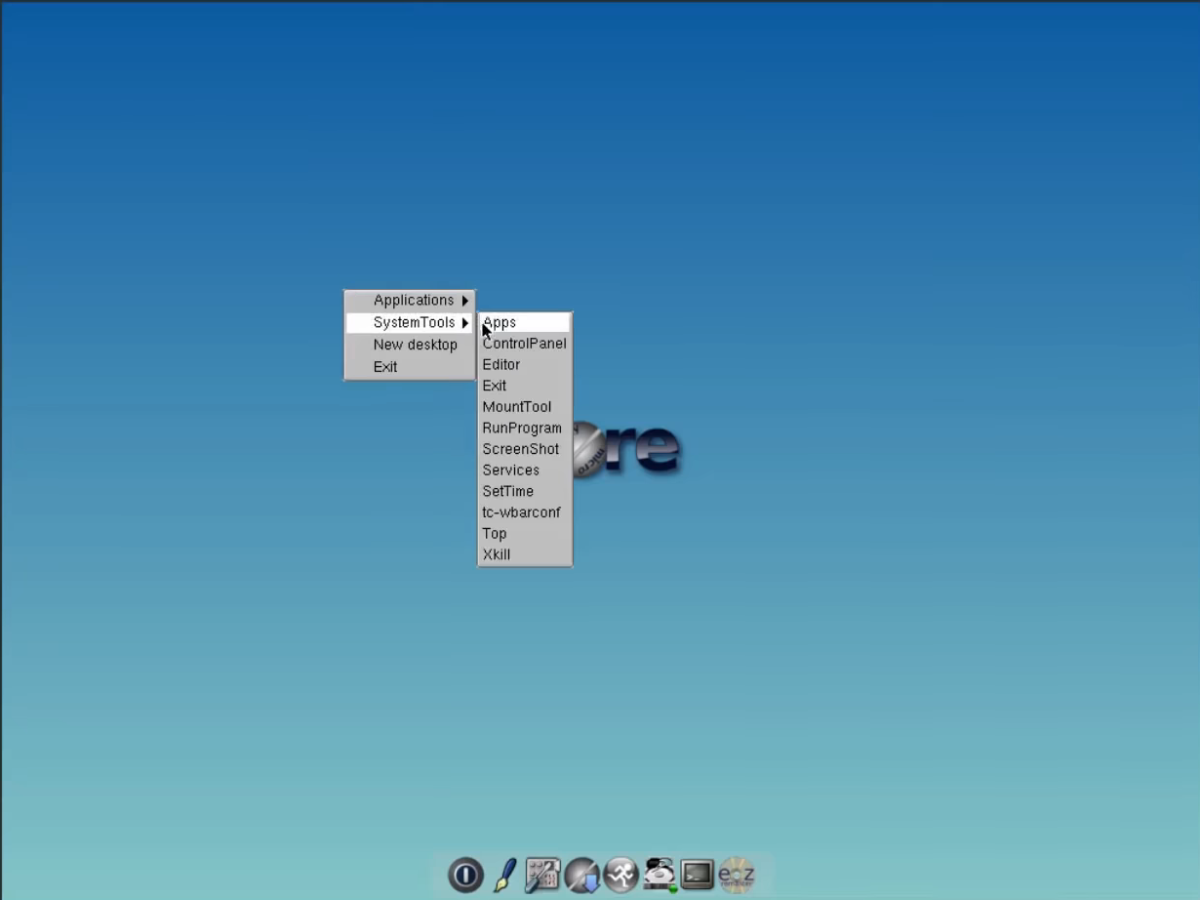
Tiny Core is a Linux distro developed by Robert Shingledecker, lead developer for former-distro, Damn Small Linux. Although the Damn Small Linux site is now dead, you can still find active ISOs online.
The Tiny Core Linux "TinyCore" installation is a minute 21MB, including the base distro and a decent GUI. The base installation requires at least 46MB RAM to run, but you will need a little more if you want to run additional applications and other software. Note that you'll need to use an Ethernet cable to get online with TinyCore as there is no out-of-the-box wireless support.
The best option for most people is the "CorePlus" installation, which comes in at 106MB. CorePlus has wireless support, support for non-US keyboards, plus installation tools for alternative window managers, and other handy setup utilities.
3. Absolute Linux
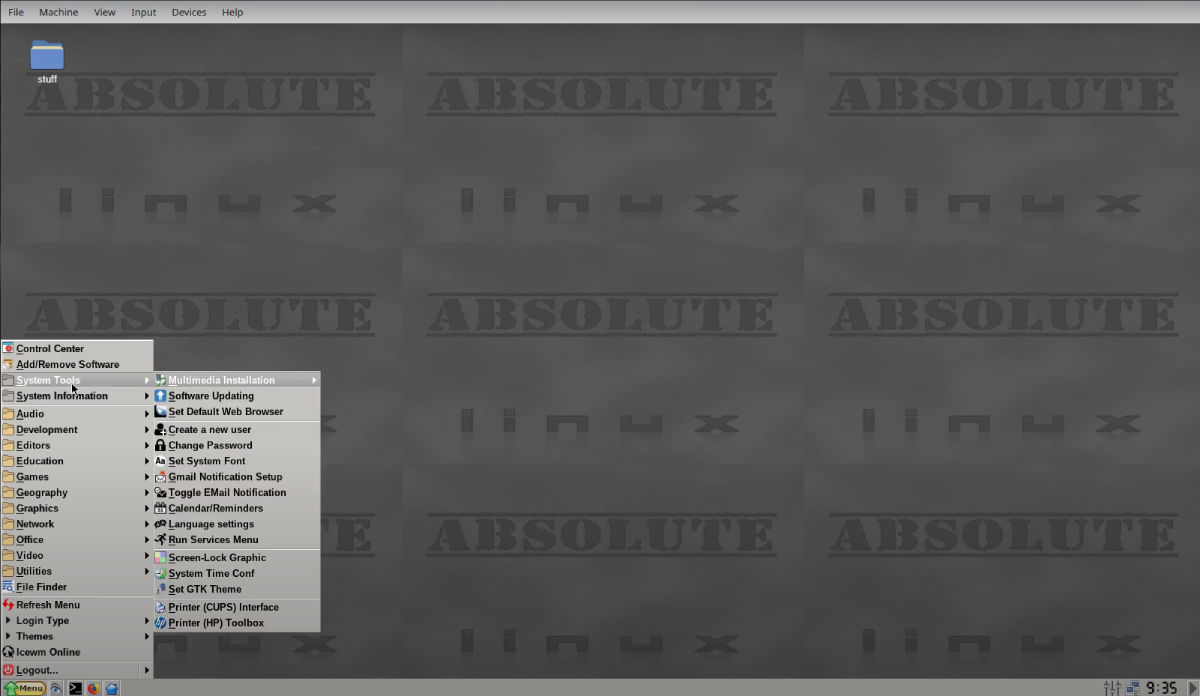
Absolute Linux is a 64-bit Linux distro based upon the Slackware project. It ships with Libre Office and Firefox preinstalled but doesn't mess around with the heavyweight desktop options such as KDE or GNOME. Instead, Absolute Linux uses the nimble IceWM window manager.
It isn't the smallest Linux distro in terms of actual download or installation size, rounding up to about 2GB, but it'll work on most hardware through its lightweight overall package and minimal hardware requirements.
4. Porteus

Porteus is a lightweight but complete Linux distro that is optimized to run from a USB flash drive. Don't have one? Don't worry! Porteus will also work on an SD card, CD, DVD, hard drive, or other bootable storage media. It's small and insanely fast, allowing you to boot and get online while other operating systems are still thinking about booting.
Porteus runs on any Intel, AMD, or VIA x86/64 processor, requiring only 512MB of disk space and 256MB of memory. No hard disk is required, as it can run from removable storage media. If you use Porteus on a removable storage media device, you can take advantage of its "Persistent" mode, saving data directly on the storage device.
It is available in both 32-bit (perfect for older PCs) and 64-bit. A kiosk edition is also available, which is a minimal system that is locked down for use by the public on web terminals. You can choose to download the Cinnamon, KDE, MATE, or Xfce version of Porteus.
5. Puppy Linux
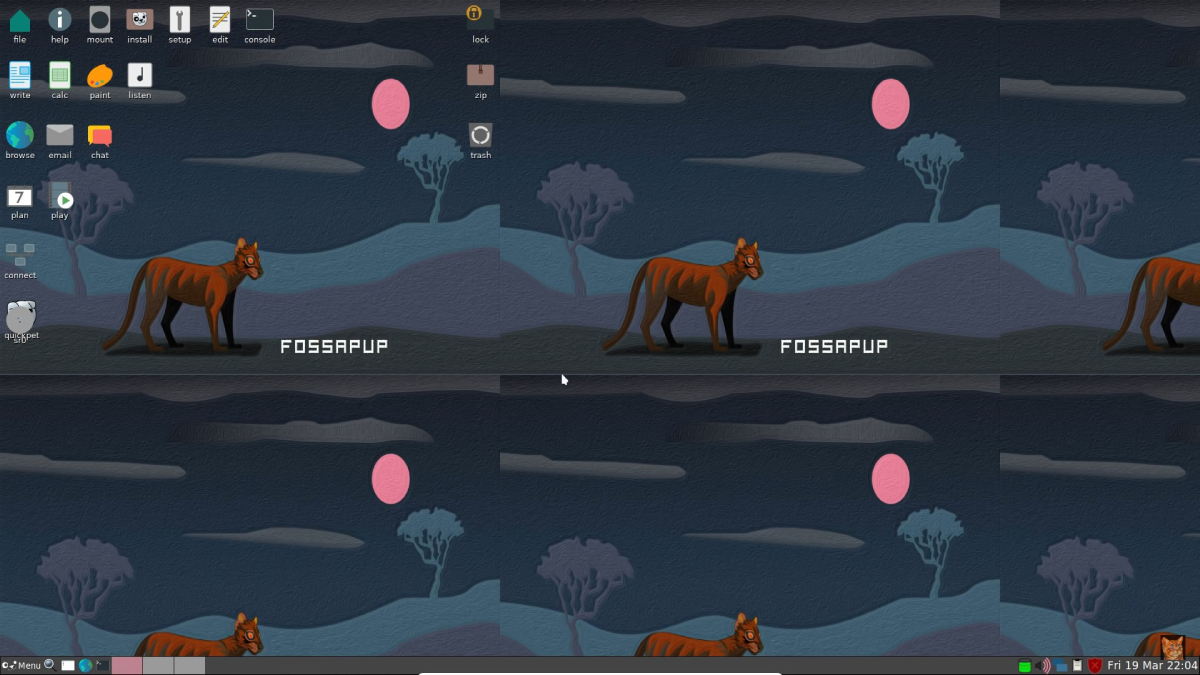
Puppy Linux is a very lightweight Linux distro that you should only install on and run directly from a USB flash drive, SD card, CD, DVD, or any other bootable storage media. You can install Puppy Linux on your hardware if you want. But there isn't really a need if you have your bootable USB flash drive with you.
It is also worth noting that Puppy Linux isn't a single distribution, nor is it a Linux distribution with numerous "flavors" (for instance, Ubuntu variants include Kubuntu, Xubuntu, Lubuntu, and so on). Rather, Puppy Linux is a collection of Linux distributions built using the same shared principle, using the same tools, using a specific set of "puppy" applications.
At the time of writing, there are six official Puppy Linux distributions. All require 300MB or less hard drive space but do have varying CPU and RAM requirements.
To find out more and choose the right version for you, head over to the official Puppy Linux distribution download page.
6. SliTaz
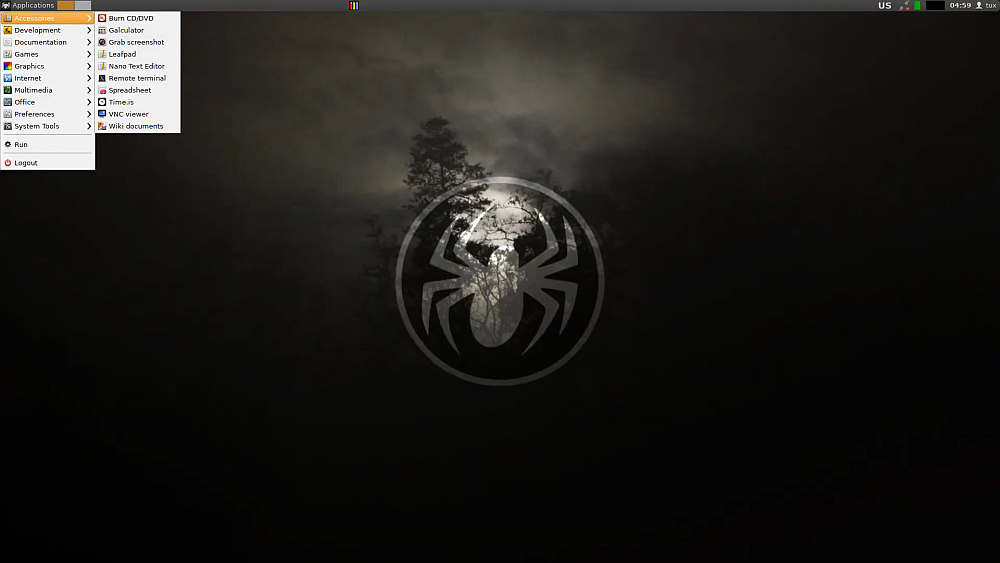
SliTaz, or Simple Light Incredible Temporary Autonomous Zone, is a lightweight, fully-featured graphical Linux distro. Simply put, SliTaz is small, fast, stable, and easy to use.
SliTaz's minimum requirements include an i486 or x86 Intel-compatible processor, at least 80MB disk space, and 192MB RAM (however, this can drop as low as 16MB RAM depending on the version of SliTaz you use).
One cool feature of SliTaz is that it runs largely in your system memory. Once you boot SliTaz up, you can remove your bootable USB flash drive for other tasks. SliTaz also has a "persistent" feature that allows you to store your data and personal settings to the removable media, ready to use on your next boot. Keep in mind that you will have to keep your media in the machine for this feature to work.
7. antiX Linux

The tiny Debian-based antiX Linux distro is not only small but also receives frequent updates delivering tweaks, new features, updates, and more. AntiX Linux is well known for being one of the friendliest Linux distros for old hardware, with many people turning to this Linux distribution to get an ancient laptop up and running once more.
The recommended minimum RAM for AntiX is 256MB, though it can run on less. You'll also need a 4GB hard drive for installation.
Even though antiX Linux is tiny, it still looks good. Included in the base installation package is the IceWM window manager, which offers a lot in terms of customization. Then there's the integrated antiX control panel, which allows you to customize a huge range of antiX features.
8. Bodhi Linux
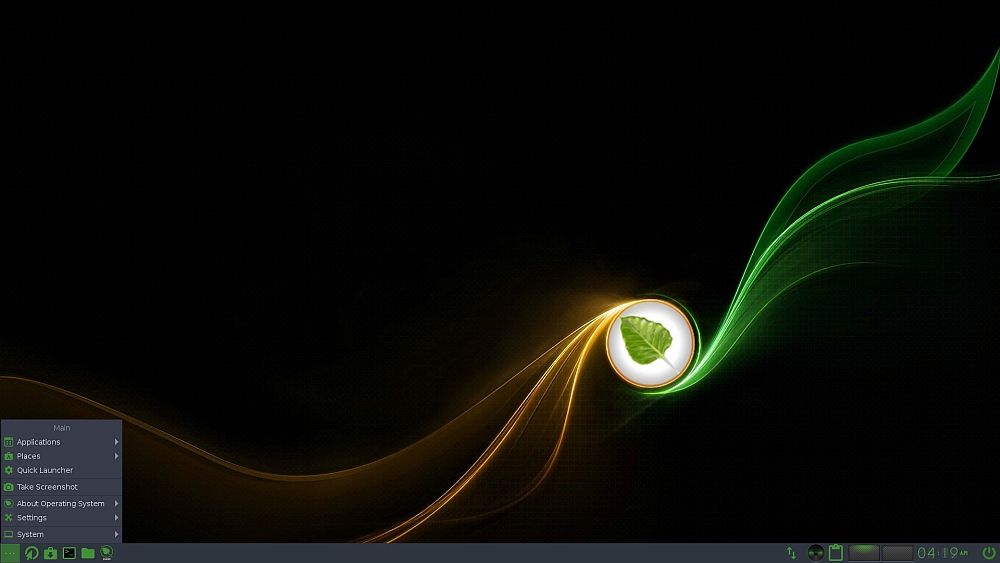
Your final tiny Linux distro to check out is Bodhi Linux. Bodhi Linux is an Ubuntu LTS-based fully-featured Linux distro that uses the Moksha Desktop. Furthermore, Bodhi Linux comes in three flavors: the Standard edition, the AppPack edition, and the Legacy edition.
The Standard edition comes with a limited range of options and applications, whereas the AppPack edition offers more features, applications, and options out of the box. Of the three, the Legacy edition is the smallest, designed to work with older, less powerful hardware.
Bodhi Linux's minimum specifications require a 500MHz processor, at least 128MB RAM, and 4GB disk space.
Revive Your Old Hardware With a Tiny Linux Distro
You can bring your old PC or other hardware back to life with any of these super small Linux distros. These lightweight Linux distros are a great way to provide a single computer for a relative who doesn't need the bloat of a more complex operating system.
- ArchBang
- Tiny Core Linux
- Absolute Linux
- Porteus
- Puppy Linux
- SliTaz
- AntiX Linux
- Bodhi Linux
Furthermore, these Linux distros will allow them to surf the web, watch and listen to media, check email, and create simple documents. Since these distributions are easy to use, Windows users won't have much trouble migrating to Linux on these distros.
source https://www.makeuseof.com/tag/linux-distro-space/
Post a Comment for "The 8 Smallest Linux Distros That Are Minimal and Lightweight"
Comment when there are difficulties